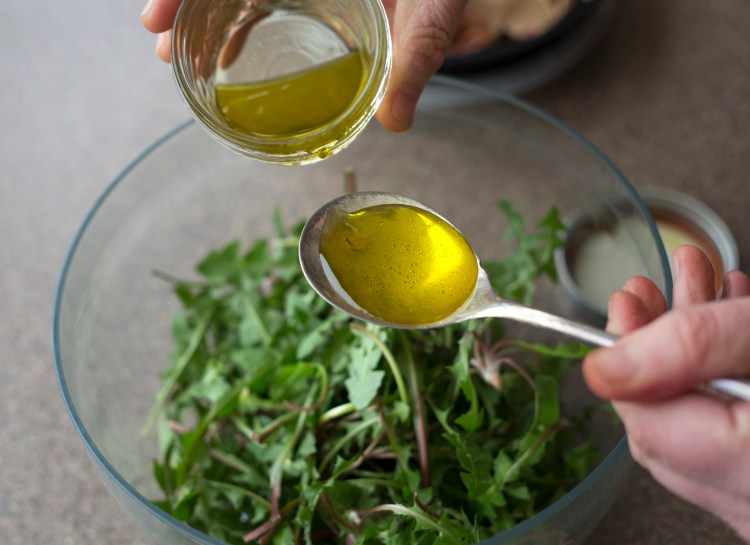Monsanto’s Roundup has rendered one of my childhood memories – picking tender dandelion greens with my Italian grandmothers in springtime – a little hazy. The herbicide curtailed the proliferation of this slightly bitter delicacy as so many Americans deem them a menace to manicured lawns.
Before chemist John E. Franz discovered the herbicide glyphosate in the early 1970s, I happily led my mom’s mom along the grassy hillside upon which her house perched, easily finding the dandelions whose leaves were no longer than the 4-inch blade of her pickin’ knife. In her opinion, these smaller, only slightly bitter leaves were best eaten raw in salads (which I love) while the longer, more bitter ones that resemble the cultivated dandelion greens found in grocery stores today, were best simmered slowly with garlic and salt pork (which I loathe). The flowers went to my Uncle John (born Giacomo Luigi Piacquadio) who made dandelion wine with the first pressing of the flowers and grappa with the second. Waste not, eat (and drink) well, was a family mantra.
Dandelions were a delicious stop gap solution in early spring before we could fill our salad bowls with tender lettuce leaves from my mom’s garden. Foraging experts in Maine can name a whole host of springtime salad substitutes found in the wild. Josh Fecteau, who leads weekly foraging and birding workshops in York and Cumberland Counties, says the ones that most often land in his salad bowl are violet leaves, which are smooth and a grassy green and taste like young spinach without the tannic aftertaste. His salads are garnished with their delicate purple flowers whose sweet finish lingers. He’s also a fan of the young leaves of the American linden (aka basswood or the salad tree, heart-shaped, light green, the size of a dessert plate and very lettuce-like.
An early spring foraged green Fecteau stirs into soups are garlic-mustard shoots, whose leaves are shaped like a knight’s shield and whose taste is self-explanatory. Unlike more popular wild edibles like fiddleheads and ramps, whose continued existence is threatened by market demand, garlic-mustard is an invasive species that spreads rapidly in many woodland areas, displacing native wildflowers, tree seedlings and wildlife. Eating them, then, is beneficial on many levels.
Chris Knapp of the Koviashuvik Local Living School in Temple is conducting a two-hour class on Friday, May 13, called Wild Salad for Kids and an all-day workshop entitled Wild Greens for the Common Table the following Sunday, May 22. Like me, he’s a lover of dandelions, and he also favors basswood leaves like Fecteau. But the trout lily, with its picturesque yellow flower, is his foraged ornamental salad ingredient of choice.
When I asked Knapp if his pristine location gave him better access to quality wild edibles than the average Maine resident living in town, he said no. “There really are no truly pristine spots for foraging. You have to take responsible environmental precautions wherever you are,” Knapp said. The best places to find edible greens are in what he called “transitional zones” – the edges of fields before the forest thickens; the banks of streams; along roadsides if you pick up hill from where traffic passes; and, in your neighborhood if you know for certain your neighbors don’t use Roundup. And as a matter of sustainability, never take more than one-quarter of any edible you find in the wild at any one time.
Christine Burns Rudalevige is a food writer, a recipe developer and tester, and a cooking teacher in Brunswick. Contact her at cburn1227@gmail.com
Send questions/comments to the editors.



